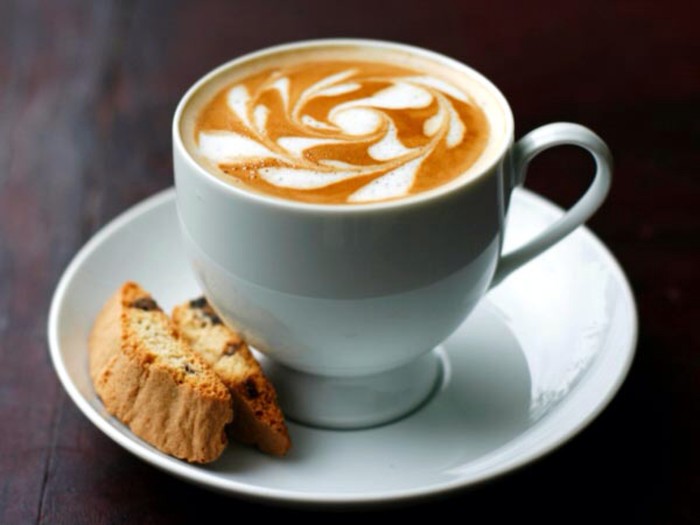The birth of boutique coffee the production process of Blue Mountain Coffee

A good cup of coffee comes from small coffee beans, after a long time and many elaborate craftsmanship, and integrated into the efforts of countless people to achieve, it can be said that cups are not easy to come by.
There are seven decisive factors for the quality of a cup of coffee. The first three depend on the farmers who grow coffee beans-the variety of coffee trees, the origin of coffee, and the method of planting-are called the basis for determining the quality of coffee; the fourth factor depends on the picker. So far, we can also improve the quality and taste of coffee. After that, we can only maintain or destroy the quality of the coffee, but we can't make it better. Then there are three crucial steps-the transportation and storage of coffee beans; the experience and techniques of coffee roasters and the way coffee beans are roasted; and finally, the grinding and production of coffee beans. All of these seven factors can affect the taste of coffee, which is closely related to the quality of coffee.
Types of coffee beans
There are more than 20 types of coffee beans, but only two are the most important. The vast majority of the world's top quality coffee comes from them-70 per cent of global coffee production comes from Arabica beans and is hailed as the best coffee bean variety because of its low caffeine content and excellent taste based on it. Less than 30 per cent of coffee comes from Robusta beans, which are not as rich as Arabica but contain 50 per cent more caffeine. COSTA adds a small amount of robusta beans to its coffee mix to balance the taste of coffee and ensure enough coffee fat to create a unique mocha Italian recipe (Mocha Italia). Coffee is planted in a wide range, and the producing areas are all over the Tropic of Cancer. Robusta coffee beans are more suitable for growing in low-altitude rainforests, while Arabica coffee is concentrated at slightly higher elevations. Coffee can be grown all year round. Some tropical countries, such as Colombia, can harvest two seasons a year. After the coffee tree is planted, the growth period is usually 3 to 5 years. During this period, coffee trees need to be pruned to prevent diseases and insect pests, and even banana trees need to be planted nearby to protect them from sunburn. Moreover, as coffee-growing areas are generally abundant with Rain Water, coffee trees should be planted on slopes to avoid being soaked by Rain Water. All these increase the difficulty of picking coffee beans. COSTA selects high-quality coffee fruits from various coffee growing areas around the world that meet the needs of coffee growth climate and is picked by experienced technicians to ensure the quality of coffee fruits. Each red coffee fruit contains 2 coffee beans, only manual operation can judge and ensure that the picked coffee fruit is fully ripe.
Boutique coffee: Jamaican Blue Mountain Coffee
The world-famous "Blue Mountain Coffee" = excellent Arabica species + suitable coffee growing belt + (steep and high altitude mountains) fertile pozzolanic soil + marine monsoon climate (humid, foggy and rainy all the year round, average precipitation is 1980 mm, temperature is about 27 degrees) + 1600 m-2256 m above sea level (the best blue mountain coffee beans are NO.1 peaberry, also known as pearl beans. It is a carefully selected small round bean among the products at an altitude of 2100 meters, the best of the fine products.
Blue Mountain Coffee is the best coffee in the world.
The Blue Mountains are located in the eastern part of the island of Jamaica, hence its name because it is surrounded by the Caribbean Sea. On clear days, the sun shines directly on the blue sea, and the peaks reflect the bright blue light of the sea. The highest peak of the Blue Mountains is 2256 meters above sea level, which is the highest in the Caribbean. The Blue Mountain Mountains are located in the coffee belt, with fertile volcanic soil, fresh air, no pollution, humid climate, foggy and rainy all the year round (the average precipitation is 1980 mm, the temperature is around 27 degrees). Such a climate has created the world-famous Jamaican Blue Mountain Coffee, as well as the highest price in the world. This kind of coffee has all the characteristics of high-quality coffee, not only full-bodied and mellow taste, but also because of the perfect combination of sweet, sour and bitter coffee, so it has no bitter taste at all, only a moderate and perfect sour taste. It is generally drunk on a single product, but because the output is very small and the price is extremely expensive, it is generally made with coffee with a similar taste on the market.
The "secret" of the pure taste of Blue Mountain coffee:
Coffee tree full minister on the rugged hillside, the picking process is very difficult, non-local skilled female workers simply can not do it. It is very important to choose the right ripe coffee beans when picking. Immaturity or ripeness will affect the quality of the coffee. The picked coffee beans are shelled on the same day, and then let them ferment for 18 hours. After that, the coffee beans were cleaned and screened. The subsequent process is to dry, which must be carried out on the cement floor or on a thick blanket until the humidity of the coffee beans drops to 12% 14%. And then store it in a special warehouse. Take it out and roast when needed, then grind it into powder. These procedures must be strictly mastered, otherwise, the quality of coffee will be affected.
The history of Blue Mountain Coffee:
In 1717 King Louis XV of France ordered coffee to be grown in Jamaica, and in the mid-1920 s, the Governor of Jamaica, Nicholas. Nicholas Lawes imported Arabica seeds from Martinique and began to plant them in St. Andrew. To this day, St. Andrews is still one of the three major producers of Jamaican Blue Mountain Coffee, with the other two producing areas: Portland (Portland) and St. Thomas (St.Thomas). In eight years, Jamaica exported more than 375 tons of pure coffee. In 1932, coffee production reached its peak and more than 15000 tons of coffee was harvested. In 1950, the Government of Jamaica established the Jamaica Coffee Industry Committee (the Jamaica Coffee Industry Board), which sets quality standards for Jamaican coffee and oversees the implementation of quality standards to ensure the quality of Jamaican coffee. The Commission awarded special official seals to raw and roasted coffee exported from Jamaica, which is the highest-level national coffee institution in the world. At present, there are six kinds of marks that can represent the origin of Blue Mountain Coffee, such as Mafis River Embankment Central Factory (M.B.C.E), Blue Mountain Coffee Cooperative Factory (M.H.C.C.T.), Portland Blue Mountain Coffee Cooperative Factory (P.X.X.S.H.), Coffee Industry Association (Wallenford), Coffee Industry Association (St. John's Peak) and J.A.S.
Real Blue Mountain Coffee
It's made from the best local raw coffee beans, which is what tasters enjoy. Its flavor is rich, balanced, fruity and sour, and can meet people's various needs. In addition, the high-quality fresh Blue Mountain coffee has a long-lasting flavor, as drinkers say, with a lingering aftertaste. The best blue mountain coffee beans are NO.1 peaberry, also known as pearl beans, which are carefully selected small round beans and boutique products at an altitude of 2100 meters. Flavor: the aroma is very full-bodied, with persistent fruit flavors. Granule: fuller roasting method: the caffeine content of moderately roasted Blue Mountain coffee is very low, less than half of other coffee, in line with the modern concept of health. The same coffee tree species, whether planted in Hawaii, Kenya, Papua New Guinea or anywhere else with a similar climate, cannot produce the flavor of blue mountain coffee beans. Pure Jamaican Blue Mountain Coffee perfectly combines the unique sour, bitter, sweet, mellow and other flavors of coffee to form a strong and attractive elegant flavor, which is unmatched by other coffee. People who love Blue Mountain Coffee say: "it is a 'coffee beauty' that combines all the advantages of good coffee." Jim, general manager of Pitt, which is famous for its coffee and tea business in the United States, said of Blue Mountain Coffee: "it tastes fragrant, smooth and mellow, and it makes me feel as precious as a gem. It is precisely because the taste of Blue Mountain coffee is moderate and perfect, so Blue Mountain coffee is generally drunk in the form of black coffee." Its liquid is golden in the sun and tastes smooth. According to the coffee book, Blue Mountain is the only bitter and sour coffee in the world that people can enjoy. Just drink it.
Jamaica Blue Mountain Coffee Harvest:
The annual harvest period is from June to November, which is usually picked by hand. after picking, it goes through the process of washing, peeling, fermentation, dehydration, drying, shelling, baking and so on before you can get a ripe blue mountain coffee bean. In the process of raw bean processing, there are special personnel responsible for quality supervision in each step. For the very precious Blue Mountain Coffee, the packing and transportation mode adopted by the Jamaican government is also different. Unlike other coffees, Blue Mountain Coffee is not packed and transported in cloth bags at 60kg / bag, but in wooden barrels at the standard of 70kg / barrel. Jamaica is also the last country to still transport coffee in traditional wooden barrels. Jamaican Blue Mountain coffee beans must obtain a certificate of quality recognition issued by the Jamaican Coffee Industry Committee, which is the only body in Jamaica authorized to issue such a certificate. And each batch of export will have special quality supervision experts responsible for sampling, baking, grinding and brewing coffee, and finally make a judgment on whether to meet the standard.
At present, there is rarely a blue mountain coffee bean in the "Blue Mountain style" coffee on the market. One kind of "Jamaican mixed Blue Mountain" coffee is a mixture of 30% Blue Mountain Coffee and 70% of the best Jamaican Alpine Coffee. The above two kinds of coffee try to imitate Blue Mountain Coffee, but can not achieve the perfect state.
(this article is reprinted)
Important Notice :
前街咖啡 FrontStreet Coffee has moved to new addredd:
FrontStreet Coffee Address: 315,Donghua East Road,GuangZhou
Tel:020 38364473
- Prev

An introduction to Ethiopian coffee beans, mocha coffee beans
Ethiopia (Ethiopia) is one of the major producers of Arab coffee beans in Africa, producing the best Arab mocha beans in the world. It is said that coffee beans were first discovered by shepherds in the Kafa region of Ethiopia, and the name of coffee evolved from Kafa, so Ethiopia is still the hometown of coffee. Production and processing of coffee beans Ethiopia
- Next

Analysis of various components in coffee beans
Caffeine: caffeine is the most eye-catching of all the ingredients in coffee. It belongs to a kind of phytoxanthin (animal muscle component). It has the same properties as theobromine contained in cocoa, green tea contains the same theophylline, and the percentage of reduction after baking is very small. Caffeine has a very wide range of effects. will affect the human brain, heart, blood vessels, gastrointestinal, muscle and kidney and other parts, the right amount of coffee
Related
- Detailed explanation of Jadeite planting Land in Panamanian Jadeite Manor introduction to the grading system of Jadeite competitive bidding, Red bid, Green bid and Rose Summer
- Story of Coffee planting in Brenka region of Costa Rica Stonehenge Manor anaerobic heavy honey treatment of flavor mouth
- What's on the barrel of Blue Mountain Coffee beans?
- Can American coffee also pull flowers? How to use hot American style to pull out a good-looking pattern?
- Can you make a cold extract with coffee beans? What is the right proportion for cold-extracted coffee formula?
- Indonesian PWN Gold Mandrine Coffee Origin Features Flavor How to Chong? Mandolin coffee is American.
- A brief introduction to the flavor characteristics of Brazilian yellow bourbon coffee beans
- What is the effect of different water quality on the flavor of cold-extracted coffee? What kind of water is best for brewing coffee?
- Why do you think of Rose Summer whenever you mention Panamanian coffee?
- Introduction to the characteristics of authentic blue mountain coffee bean producing areas? What is the CIB Coffee Authority in Jamaica?

